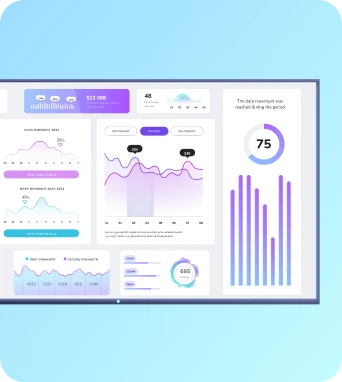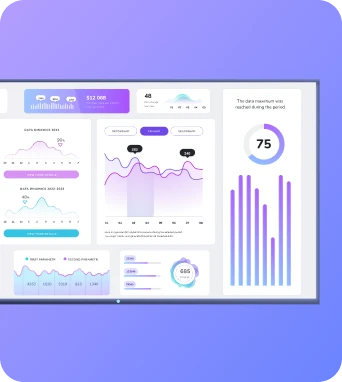
Paper-based comms - a thing of the past, right?
As it turns out, no. Even in the digital age when paperless offices are thought to be a reality for most businesses, it’s estimated that 95% of all businesses still store information on paper.
According to the Paperless Project, an average office worker uses 10,000 sheets of paper a year.
Umm - what?
Yep.
Printing can be a huge financial cost to businesses, to say nothing of the environmental cost. With pressure on businesses to reduce their environmental impact, it’s important to understand the environmental cost of printing for their organisation and our planet.
Impact of print-based advertising
Do you regularly use printed posters and banners in your advertising? You may be causing more damage to the environment than you realize. Think about it:
For every ton of paper your business consumes, you sacrifice 17 trees, 7,000 gallons of water, two barrels of oil, and 4,100kWh of electricity. (Source)
Those billboards you’re using to advertise your business? They’ll stick around a lot longer than you will, in a landfill.
And what about that time you sent an advertisement to print only to discover a glaring error in the final delivery? The entire lot gets dumped without seeing the light of the day, leading to a huge loss not only to your pocket, but also to the environment.
So what’s happening to all that paper when it reaches the end of its life?

Paper waste - a look at the alarming numbers
Paper alone accounts for 40% of all waste in the United States. That adds up to about 71.6 million tons per year. What many hope to reduce, reuse, and recycle, unfortunately ends up being dumped into a landfill. (Source)
It’s easy to forget that production of paper also has a devastating impact on the world we live in, but the facts are there for anyone looking:
- Between 2015 - 2020, the rate of deforestation was estimated at 10 million hectares per year
- Paper manufacturing uses up to 40% of all industrial wood globally
- The process of manufacturing paper releases nitrogen dioxide, sulfur dioxide, and carbon dioxide into the air, contributing to pollution such as acid rain and greenhouse gases.
- The US consumes more than 30% of all paper products globally, despite being only 5% of the world’s population.
It's not just paper either. All that stuff has to be printed, right? Enter printers and ink cartridges, stage left.
What about your printers?
Ink printers and their ink are made up of several potentially harmful chemicals:
- Butyl urea, which stops your paper from curling
- Cyclohexanone, which helps ink stick to polymers
- Several dyes including reactive red 23 dye, acid yellow 23 dye and direct blue 199 dye, which contains sulphur
- Ethoxylated acetylenic diols that modify the surface tension of the water and colours
- Ethylenediaminetetraacetic acid (EDTA) which is full of contaminants and ethylene glycol.
Manufacturing ink cartridges costs the environment. Producing a new laser cartridge consumes more than three quarts of oil. For inkjet cartridges, it’s about three ounces of oil.
And when you throw away an old ink or toner cartridge, the volatile organic compounds (VOCs) and heavy metals inside will pollute the soil and water once they reach landfills.

Over 375 million used ink and toner cartridges are thrown out every year, and most of them end up in landfills. To bring that into perspective, this means that 11 cartridges are thrown out every second and 1 million cartridges every day. And they’re not going anywhere fast - the plastic in a print cartridge can take 1000 years to fully decompose. Rather scary when one puts it like that, wouldn’t you say?

Digital signage vs. print-based advertising: eco-friendly faceoff
Besides the clear advantage screens have when it comes to things attracting customers and increasing brand awareness, digital signage is a lot more earth-friendly than its paper counterpart.
By opting for screens over posters, your business can help save the earth while simultaneously keeping money in your pockets. Consider this:
The production and implementation of your printed signage is killing the planet: the trees that have to be cut down, transported to mills, processed and made into the paper that you then use to print assets on, deliver across locations, put up, and finally throw out. Repeat this for millions of businesses across the globe, every day.
You can’t see the ecological footprint of that poster in the window, but it’s there.

Printed advertising has a very short shelf life, yet the waste generated from monthly multi-location print campaigns has much more long-term implications than setting up a digital signage network.
What other eco-advantages can digital signage offer?
It’s flexible & saves costs
Notice an error in that on-screen message? Take it down. Then log on to a remote content management system and replace it in seconds. No logistics costs are incurred – no one has to reprint the posters or transport them to the display location, adding to their carbon footprint on the way.
It’s durable
Digital signage solutions are made to last. The average lifecycle of an LED display is 100,000 hours. Even if you were to run your screen 24/7, 365 days a year, a well-maintained display can last you around 10 years. Compared to print messaging, which quickly becomes obsolete and faded, digital signage has the advantage.
It’s energy-efficient
You might be tempted to argue that digital signage just replaces paper waste with electrical use. While digital signage displays do draw power, it’s not as much as you’d think. Modern screens consume 90% less energy than they did 20 years ago. And remember, LED screens typically use less electricity and last longer than LCDs.
It’s recyclable
Digital signage displays are also easier to recycle than you’d think. They’re made of what are known as cradle-to-cradle components - parts that can be removed and reused without needing to be broken down or melted. Aluminum, copper, gold, and polycarbonate plastic are materials that can be harvested from most displays when you retire them. Some vendors even have hardware trade-in programs, letting you swap out old devices for new ones at little cost.
Advantage goes to - drumroll please - digital
It's not just that it looks cool (it does) or leads to incredible ROI for your business (it does) — digital signage actually has benefits over paper, in terms of cost, effort and environmental impact.
Your customers, employees, guests, and communities are thinking about the environment these days. And they expect you to think about it too. Organizations making efforts to reduce their environmental impact with digital signage don’t just gain eco-cred with their audience. Thave the advantage in all corners: cost, efficiency, reach, and ROI.
To businesses still relying on print, what on earth are you waiting for?



